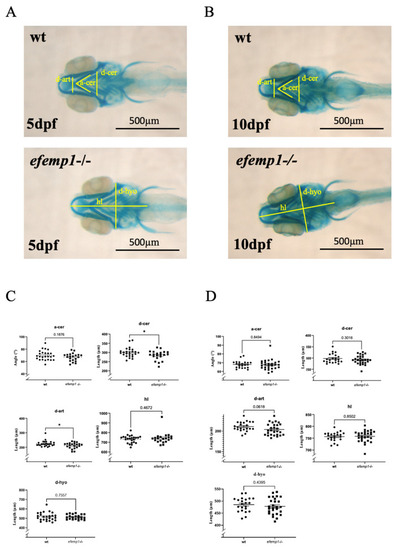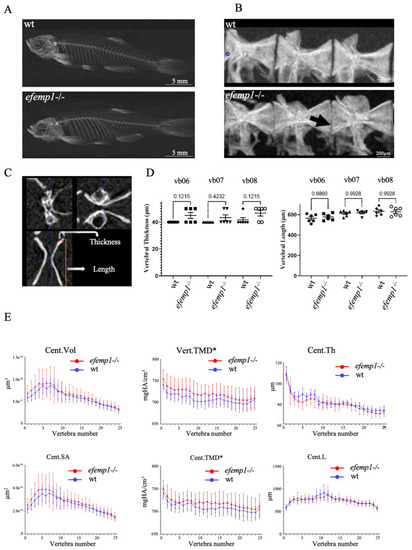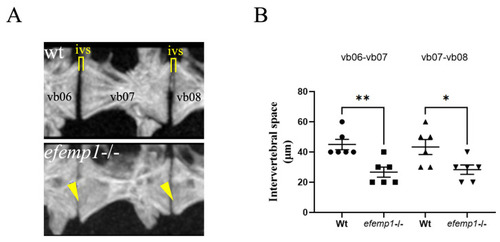- Title
-
A Zebrafish Mutant in the Extracellular Matrix Protein Gene efemp1 as a Model for Spinal Osteoarthritis
- Authors
- Raman, R., Bahri, M.A., Degueldre, C., Caetano da Silva, C., Sanchez, C., Ostertag, A., Collet, C., Cohen-Solal, M., Plenevaux, A., Henrotin, Y., Muller, M.
- Source
- Full text @ Animals (Basel)
|
Whole mount in situ hybridization on 48 hpf zebrafish embryos. ( EXPRESSION / LABELING:
|
|
Cartilage staining with alcian blue of 5 dpf ( |
|
Increased TMD in PHENOTYPE:
|
|
Reduced intervertebral disk space and bone spurs observed in the spine of PHENOTYPE:
|




